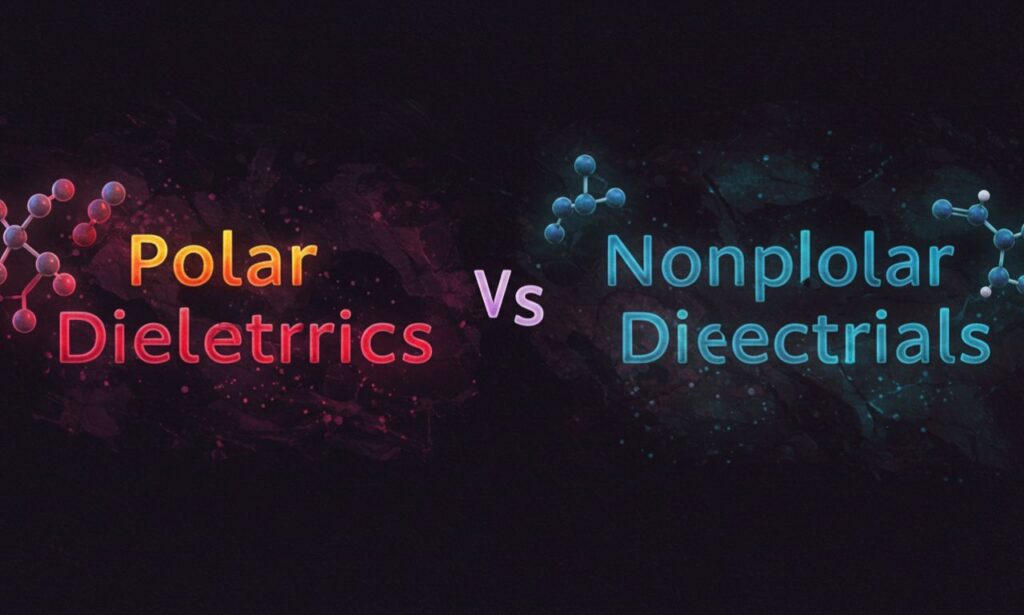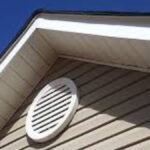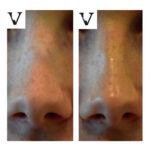Dielectrics are insulating materials that do not conduct electricity but support electrostatic fields. When subjected to an electric field, they influence how charges are stored or separated. In electrical engineering and physics, polar and nonpolar dielectrics play a vital role in capacitors, insulators, and many electronic components.
Understanding the characteristics and behavior of these two types of dielectrics is essential for applications in modern electronics, telecommunications, and energy systems.
What Are Dielectrics?
Before distinguishing between polar and nonpolar dielectrics, it’s important to define what a dielectric is. A dielectric is an electrical insulator that can be polarized by an applied electric field. This means that when placed in an electric field, the positive and negative charges within the dielectric material shift slightly, creating an internal electric field that opposes the external one.
Dielectrics increase the capacitance of a capacitor by reducing the effective field strength between its plates, allowing more energy to be stored.
Define Polar Dielectrics
Polar dielectrics are materials in which the individual molecules possess a permanent electric dipole moment. This means their atoms are arranged in such a way that there is always a separation between positive and negative charges, even without an external electric field.
Characteristics of Polar Dielectrics:
-
Possess permanent dipole moments.
-
Molecules align partially in the direction of an electric field.
-
High dielectric constant.
-
More temperature-dependent behavior.
-
Examples include water (H₂O), hydrogen chloride (HCl), and ammonia (NH₃).
In polar dielectrics, the alignment of dipoles enhances the internal electric field, but thermal agitation at high temperatures can oppose this alignment.
Define Nonpolar Dielectrics
Nonpolar dielectrics are materials made of molecules that do not have a permanent dipole moment. The positive and negative charges in their atoms or molecules are symmetrically distributed. However, when an external electric field is applied, these molecules become temporarily polarized.
Characteristics of Nonpolar Dielectrics:
-
No permanent dipole moment.
-
Induced dipoles only when exposed to an electric field.
-
Generally lower dielectric constant.
-
Less affected by temperature.
-
Examples include nitrogen (N₂), oxygen (O₂), carbon dioxide (CO₂), and benzene (C₆H₆).
These materials are widely used in insulation and non-conductive environments due to their stable properties under varying conditions.
Molecular Structure of Polar and Nonpolar Dielectrics
To understand polar and nonpolar dielectrics, it’s helpful to examine their molecular structures:
Polar Dielectrics:
-
Molecules have asymmetric charge distributions.
-
Dipole moments do not cancel out.
-
Commonly have bent or asymmetrical shapes (e.g., water).
Nonpolar Dielectrics:
-
Symmetrical charge distribution.
-
Either linear or symmetric molecules.
-
Dipole moments, if present, cancel each other out.
Polarization Mechanism in Dielectrics
When dielectrics are placed in an electric field, different polarization mechanisms come into play:
In Polar Dielectrics:
-
The existing dipoles try to align with the external electric field.
-
This alignment increases the overall polarization of the material.
-
Stronger interaction with electric fields leads to higher energy absorption.
In Nonpolar Dielectrics:
-
The external electric field induces a temporary shift of charges within the atoms or molecules.
-
This creates an induced dipole moment, which is weaker than permanent dipoles.
Dielectric Constant Comparison
The dielectric constant (relative permittivity) measures a material’s ability to store electrical energy. Comparing polar and nonpolar dielectrics:
| Material Type | Example | Dielectric Constant |
|---|---|---|
| Polar Dielectric | Water | ~80 |
| Polar Dielectric | Ethanol | ~24.3 |
| Nonpolar Dielectric | Benzene | ~2.3 |
| Nonpolar Dielectric | Air | ~1.0006 |
As shown, polar dielectrics generally have higher dielectric constants due to their permanent dipoles enhancing charge storage.
Temperature Effects on Dielectrics
Temperature plays a different role in polar and nonpolar dielectrics:
In Polar Dielectrics:
-
Increased temperature agitates molecules.
-
Alignment with the electric field becomes less efficient.
-
Dielectric constant decreases with temperature.
In Nonpolar Dielectrics:
-
Polarization is mostly due to induced dipoles.
-
Temperature has minimal effect on dielectric behavior.
This difference makes nonpolar dielectrics more suitable for high-temperature environments.
Frequency Response of Dielectrics
When subjected to alternating electric fields, dielectrics respond differently depending on their type:
Polar Dielectrics:
-
At low frequencies, dipoles can follow the field.
-
At high frequencies, dipoles can’t keep up, causing energy loss.
-
Results in dielectric dispersion and dielectric loss.
Nonpolar Dielectrics:
-
Since they rely on electronic polarization (fast), they respond well even at higher frequencies.
-
Lower dielectric loss compared to polar dielectrics.
This makes nonpolar materials ideal for high-frequency circuits and microwave applications.
Applications of Polar Dielectrics
Polar dielectrics are used where high dielectric constants and energy storage are needed:
-
Capacitors in power electronics.
-
High-energy storage devices.
-
Dielectric heating (e.g., microwave ovens).
-
Sensors (humidity, gas).
Water, though not used in hardware directly, is an important polar dielectric in biological and environmental systems.
Applications of Nonpolar Dielectrics
Nonpolar dielectrics find use in applications requiring thermal and frequency stability:
-
Insulation materials in transformers and motors.
-
High-frequency transmission lines.
-
Radar and RF components.
-
Non-conductive lubricants and coolants.
Their chemical inertness and low loss make them valuable in durable electronics and aerospace systems.
Advantages and Disadvantages
| Property | Polar Dielectrics | Nonpolar Dielectrics |
|---|---|---|
| Dielectric Constant | High | Low to moderate |
| Temperature Stability | Low | High |
| Frequency Response | Poor at high frequencies | Excellent |
| Dielectric Loss | Higher | Lower |
| Common Applications | Capacitors, sensors | Insulation, RF equipment |
Summary: Understanding Polar and Nonpolar Dielectrics
To fully grasp polar and nonpolar dielectrics, one must consider their structure, polarization behavior, response to temperature and frequency, and practical uses.
Key Differences:
-
Polar dielectrics have permanent dipoles; nonpolar do not.
-
Polar materials are better for energy storage; nonpolar are better for insulation and stability.
-
Dielectric constant is much higher in polar substances.
-
Frequency and temperature response is more stable in nonpolar materials.
Both types serve vital roles in modern electronics, power systems, and material science.
Conclusion
Understanding polar and nonpolar dielectrics is essential in the fields of physics, chemistry, and electrical engineering. While polar dielectrics provide high energy storage and reactivity due to their permanent dipoles, nonpolar dielectrics offer stability and low losses in harsh conditions. Each type is suited to specific industrial and technological needs.
As electronic devices become smaller, faster, and more efficient, selecting the right type of dielectric material becomes even more critical. Mastering their properties and behavior helps in designing better, safer, and more reliable systems.







